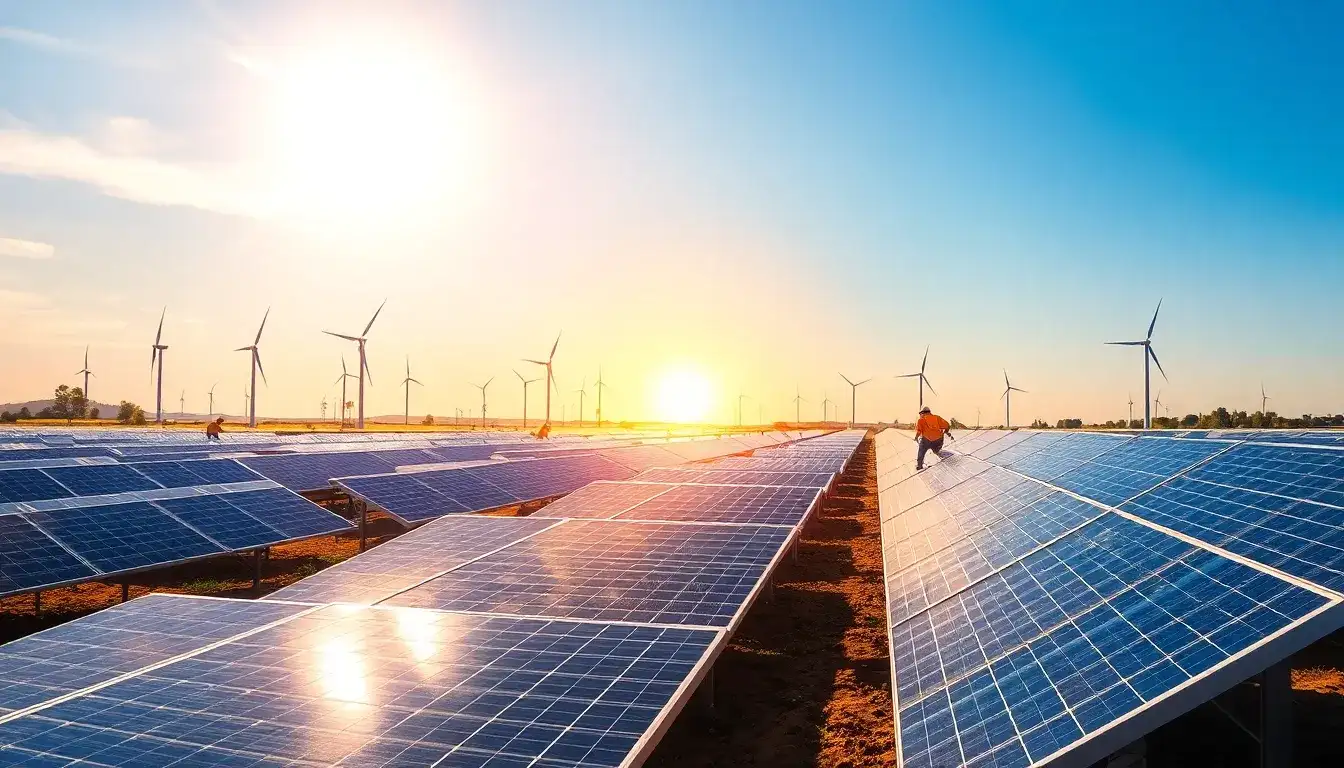
The photovoltaic industry is showing signs of recovery. Following a downturn in the second half of last year, prices for products such as crystalline silicon photovoltaic modules and photovoltaic-grade polysilicon have begun to rebound to varying degrees.
Ding Zhenyu, a senior investment advisor at Shaanxi Jufeng Investment Consulting Co., expressed in an interview with Securties Daily: “On the demand side, the domestic ‘rush for installation’ has led to a surge in distributed photovoltaic projects, compounded by a recovery in overseas markets, which together have driven market demand. On the supply side, leading companies are controlling production capacity while some second-tier companies are depleting their inventory of previously low-priced products. This balance of supply and demand is contributing to the increase in prices across the photovoltaic industry chain.”
Is this related to the “rush for installation”? Data shows that after reaching a low of $0.07 per watt for crystalline silicon photovoltaic modules in December last year, prices remained stable at this level through January and February of this year, before rebounding to $0.08 per watt in March. Meanwhile, photovoltaic-grade polysilicon has risen from a low of $4.36 per kilogram in July of last year to a latest price of $5.04 per kilogram as of March 19.
“After the Spring Festival, prices for various photovoltaic products have been increasing, with a particularly noticeable rise in module prices. Recent market trends indicate that some leading manufacturers have continued to raise their component prices, especially for high-efficiency modules, which are in high demand,” said Huang Tian, a professional in the photovoltaic sector, to Securities Daily.
Industry consensus suggests that the price increase in the photovoltaic supply chain is indeed linked to the “rush for installation.” In January, the “Management Measures for the Development and Construction of Distributed Photovoltaic Power Generation” was released, stipulating that distributed photovoltaic projects that were filed before this policy and are scheduled to commence operation before May 1, 2025, will continue to follow the previous policies. The National Development and Reform Commission clarified in February that all power generation from renewable energy projects (including wind and solar) will generally enter the electricity market, and the pricing will be determined through market transactions. Policies will differentiate between existing and new projects, with June 1, 2025, serving as a pivotal date.
This policy release highlights April 30 as the deadline for adjustments to grid access methods and electricity pricing for commercial and industrial distributed photovoltaic projects, while May 31 marks the full market entry point for new projects. To capitalize on the benefits of existing policies, companies are rushing to install systems ahead of these deadlines, significantly boosting demand for photovoltaic products.
In addition, a gradual recovery in overseas markets is also contributing to the price increase of photovoltaic products. A report by Guohai Securities in February noted that on February 11, European photovoltaic module prices rebounded for the first time after months of decline.
Furthermore, industry self-regulation has begun to show results. In October of last year, the China Photovoltaic Industry Association convened a meeting where several companies in the photovoltaic supply chain signed a self-regulatory agreement to manage production capacity, which has become an important factor in driving price recovery.
Many publicly listed companies are benefiting from the rebound in photovoltaic product prices. Recently, several A-share listed companies in the photovoltaic supply chain addressed investor concerns on trading platforms. A representative from Suzhou KuaiKe Photovoltaic Electronics Co., indicated that the prices of their main products are positively correlated with downstream module price fluctuations, and that increased market demand is boosting their product sales. Similarly, a representative from TCL Zhonghuan New Energy Technology Co., noted that by the end of the fourth quarter of 2024, wafer prices are expected to stabilize and rise gradually. The company plans to maintain stringent cost efficiency, enhance operational quality, address weaknesses, innovate for development, and accelerate global expansion.
The future price trends are drawing attention from the market. Chen Tianlang, an analyst from TrendForce Consulting (Shenzhen) Co., stated, “In April, the demand for solar cells will continue to thrive. The order visibility for module manufacturers is rapidly improving, and we expect production volumes to increase further.”
However, as the “rush for installation” comes to an end, demand is likely to change. “After the rush installation phase concludes, the market demand for photovoltaic products may decline, easing the tight supply-demand situation. The industry will revert to its primary focus on enhancing quality, reducing costs, and increasing efficiency. Companies will need to continue developing technical and cost advantages, and the competitive landscape in the industry will continue to optimize,” Ding Zhenyu added.
According to Zheng Lei, Chief Economist at Samoyed Cloud Technology Group, “In the segments of the photovoltaic supply chain including polysilicon, wafers, solar cells, and modules, China has already established a leading position globally. In the future, companies need to keep pushing forward with R&D innovation and technological upgrades to further lower the costs of photovoltaic power generation, enhancing its competitiveness and solidifying China’s advantages in the photovoltaic industry.”







